The Beginning: Hands in Soil, Dreams in Heart
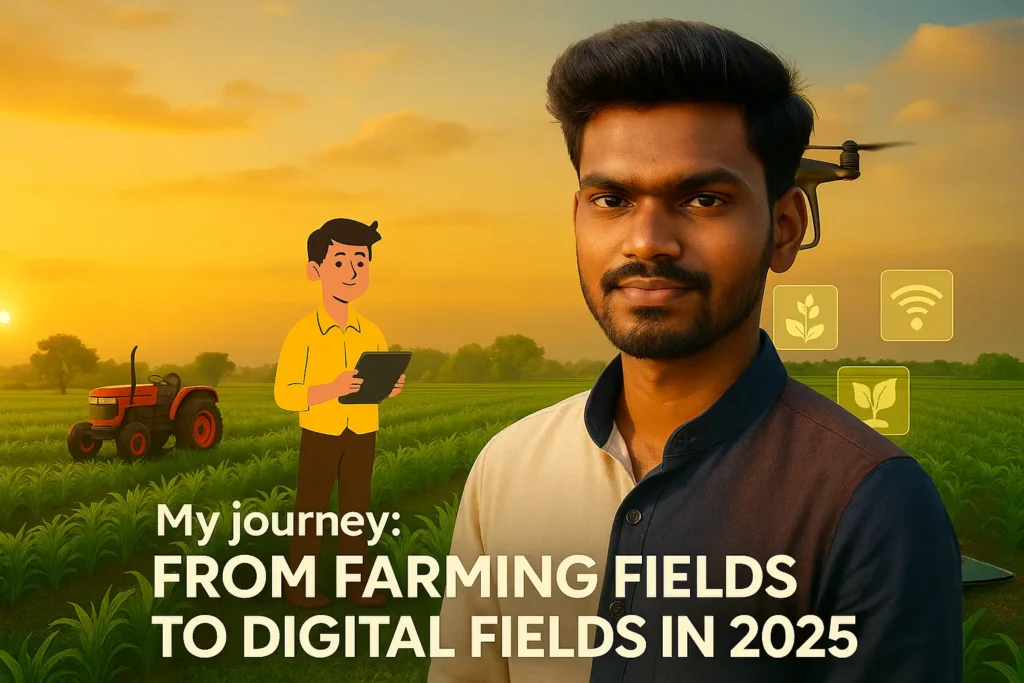
This is story of my journey from Farming Fields to Digital Fields. I grew up in a small village, surrounded by wide open fields. Even as a kid, I loved spending time in the farms. While most children dreamed of superheroes, my dream was simple jumping around in the mud, planting seeds, and listening to elders talk about crops and seasons.
Farming fascinated me from the very beginning. I used to help my family during planting and harvesting. I would sit with my grandfather, listening carefully as he explained why wheat needs cool weather or how to check if the soil is ready. Even in school, my teachers noticed that while other kids doodled cartoons, I would sketch tractors and crop fields in my notebook.
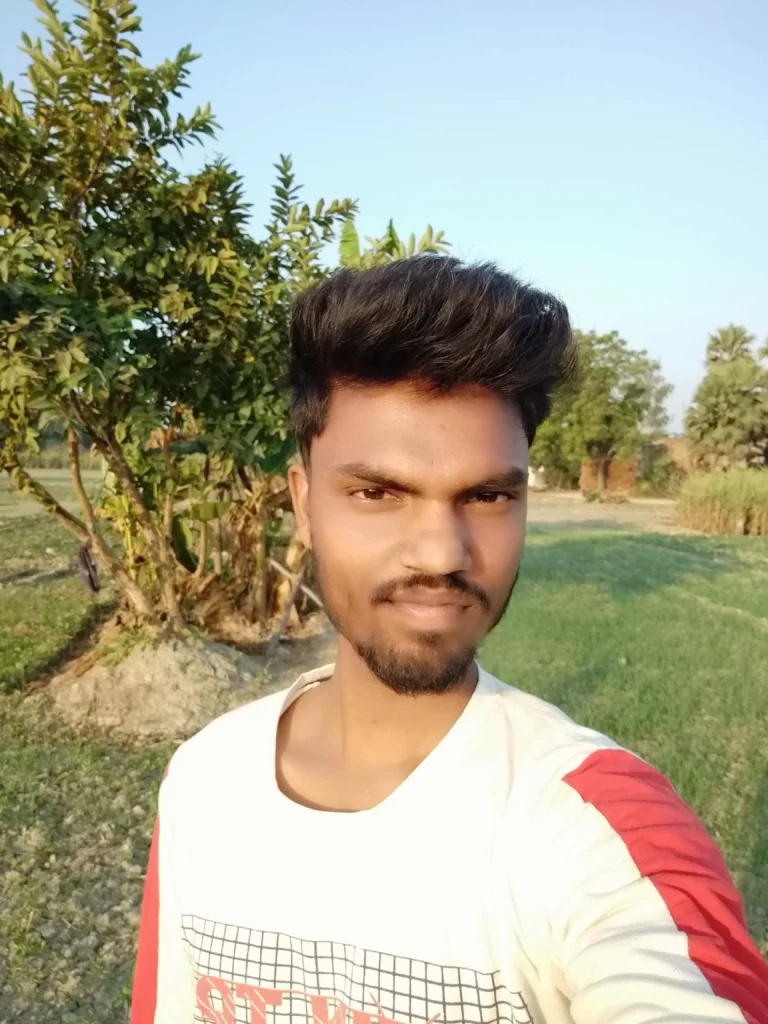
Those early years planted a dream in me—a dream to stay connected with the land and keep learning about it.
From Classroom to Fields: Where Learning Got Real
When I joined college for agriculture, things started to get real. I finally had a chance to turn book knowledge into practical work. Our practical labs and fieldwork were full of hands-on experiences. I still remember them clearly:

- Rice and Wheat: We planted rice seedlings and harvested wheat on the college farm. It wasn’t just theory anymore—I was actually doing it.
- Fertilizer Application: We learned how to calculate the right dose of fertilizers for different crops, and how to apply them correctly. Precision mattered.
- Arhar Threshing: We harvested pigeon pea (arhar) and threshed it by hand. That’s where I learned how grain quality is judged by feel and look.
- Dairy Experiments: In the dairy lab, we made khoa, buttercream, ice cream, and paneer. It was science you could taste—delicious and educational!
- Poultry Farming: We raised Kadaknath chickens—a rare Indian breed known for its black meat and high nutrition. (Fun fact: Kadaknath is famous for its taste and medicinal value!)
- Soil Science: We ran lab tests on soil samples, learning how to extract nutrients like calcium and magnesium. It was eye-opening to see how much the soil can reveal.
- Entomology: We built bee boxes to attract local honeybees and used sticky traps to study pest insects. I realized how much nature is happening quietly all around us.
- Horticulture: We made jams and jellies from fruits, learning how to preserve produce and add value beyond just selling raw crops.
- Agri-Engineering: We operated fertilizer drills and seed drills—large machines that gave us the feeling of being real farmer-engineers.
These experiences taught me that farming is not just about what you read—it’s about what you see, touch, and do. Every lab session and field visit made me feel more connected to the world of agriculture. It was no longer just a subject; it became a way of life.
Learning Beyond Books: Field Visits That Changed My View of Farming
College life wasn’t just about labs and lectures—it was about stepping into the real world of agriculture. And nothing brought that alive more than our field visits.
🥛 Banas Dairy, Varanasi: From Cow to Carton
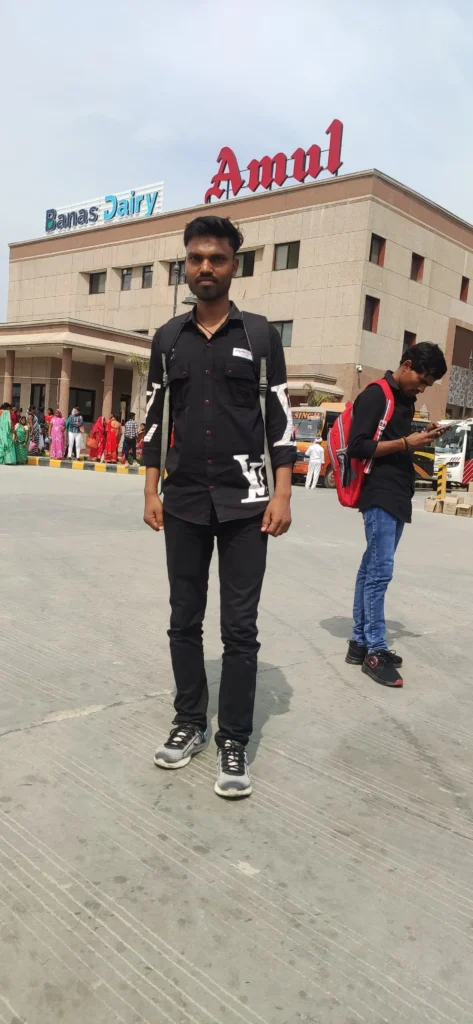
In my final year, we visited Banas Dairy (yes, the one connected to Amul) in Varanasi. Inside the huge plant, I saw how raw milk from villages turns into butter, paneer, and ice cream through modern machines. Watching milk flow through pipes, getting pasteurized, packed, and chilled—it was like seeing a whole new side of farming. That day, I realised: farming doesn’t end at the farm—it transforms in factories.
🧪 ICAR-IIVR: Where Science Meets Soil
Then came a dream visit—ICAR’s Indian Institute of Vegetable Research (IIVR) in Varanasi. Every agri student dreams of walking through those gates. And when I did, I was blown away.
We met scientists who were working on the future of vegetables. I saw with my own eyes:
- Brimato plant – One plant, growing both brinjal and tomato. Yes, you read that right!

- Pomato plant – Potatoes below, tomatoes above—on the same plant. Pure innovation.

- Polyhouse tomatoes – Inside a climate-controlled polyhouse, we saw the tall, high-yielding Ramdhari NS4266 variety, standing like soldiers.

- Cow pea Varieties – Like Kashi Gauri, Kashi Kanchan, and Kashi Unnati—proudly growing in demo plots.
- Drone demo – Right there in the open field, we watched a drone fly and spray pesticides like it was straight out of a sci-fi movie.
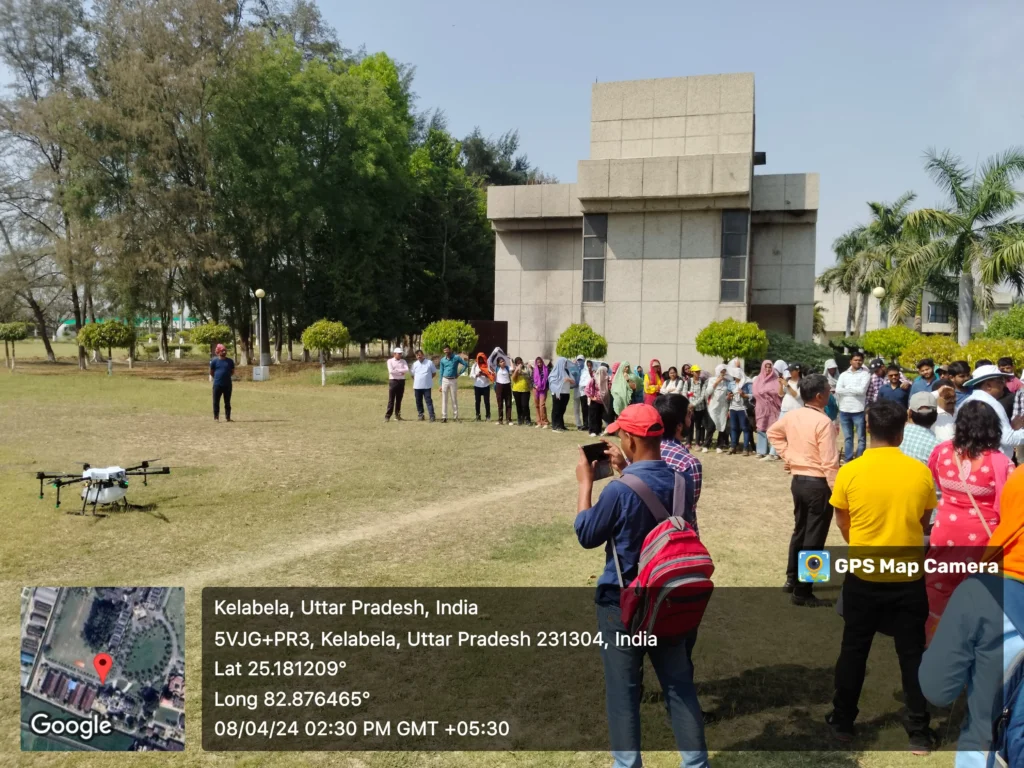
Standing inside that bright polyhouse, surrounded by breakthrough crops and buzzing drones, I felt something shift. This wasn’t just farming. This was farming with vision.
From Soil to Sky: My Dream Took Root Here
Each of these hands-on moments taught me that farming is more than soil and seeds—it’s about curiosity, courage, and change. My hands had touched real crops, and my eyes had seen the future growing leaf by leaf. These visits didn’t just teach me—they lit a spark.
Lessons from the Fields: Learning Beyond Books 🌾
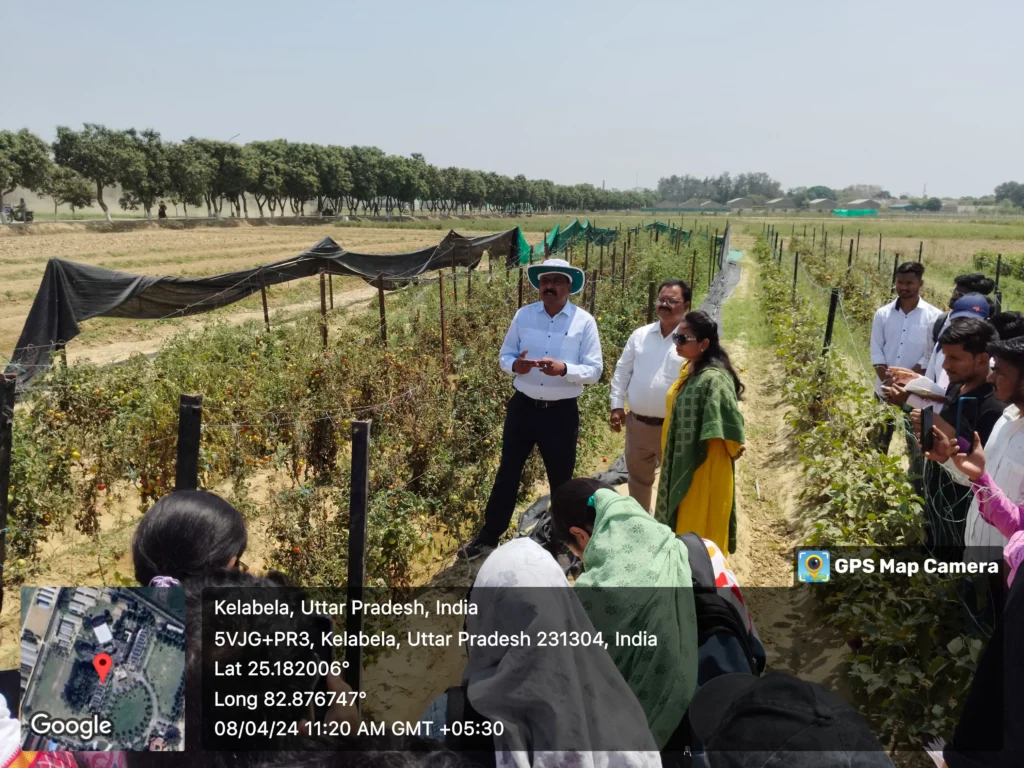
Reading about farming in class is one thing—but getting your hands dirty in the real world? That’s where true understanding begins. During my RAWE (Rural Agricultural Work Experience) at KVK Kallipur, Varanasi and IIVR, Varanasi, I saw this truth unfold every single day.
Our KVK mentors didn’t just teach—they guided us through real challenges, right from the soil beneath our boots to the smell of compost in the morning air. Suddenly, textbook lessons weren’t just theories anymore. They were alive, in the mud, in the leaves, in the small wins and messy mistakes.

🧪 Soil Sampling: From pH to Practical
I still remember collecting soil samples using an auger, carefully labeling them, and sending them off for lab testing. In class, I’d learned that soil pH affects nutrient availability. But here, I saw how a slightly acidic patch meant stunted plants. That’s when it hit me—this is why soil testing matters. You can’t just guess and hope for the best.
🌱 Our Organic Farm Plot: Farming the Natural Way
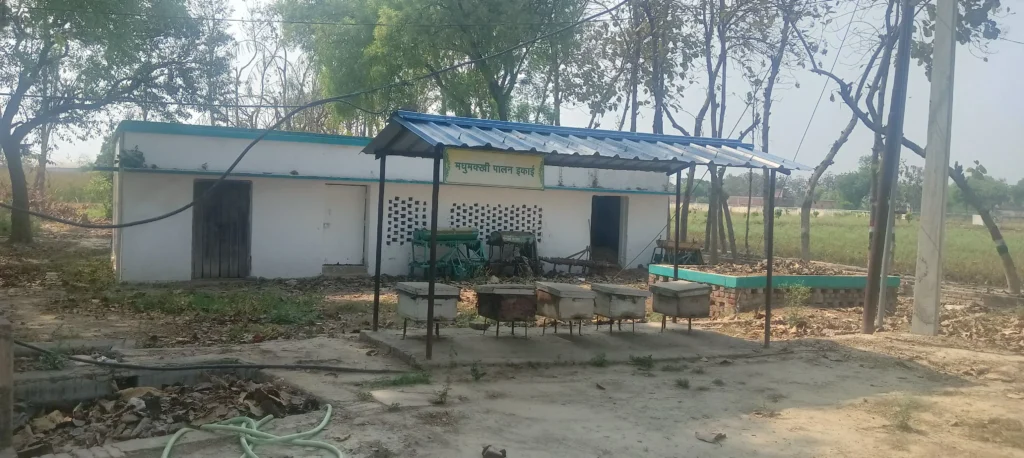
One of the most exciting parts of RAWE was working on our organic farming demo plot. We prepared the land with cow dung, vermicompost, FYM, and natural sprays like neem extract. We even got to use Jeevamrit and Beejamrit, traditional Indian bio-fertilizers.There also learn about Bea keeping and their Importance economically and environmentally.
And when pests came? No chemical shortcut. We made homemade pest repellents and sprayed them with our own hands. That moment when the “kitabi” theory finally faced real-life insects—and worked? Unforgettable!
🦆🐟 Duck-Fish-Fruit Pond: A Living, Breathing Ecosystem
But the real “aha!” moment came from a beautiful integrated farming system we helped design—a small pond with ducks and fish, surrounded by fruit trees like lemon and guava. The ducks ate pests, their droppings fed the fish, and the pond water nourished the soil.
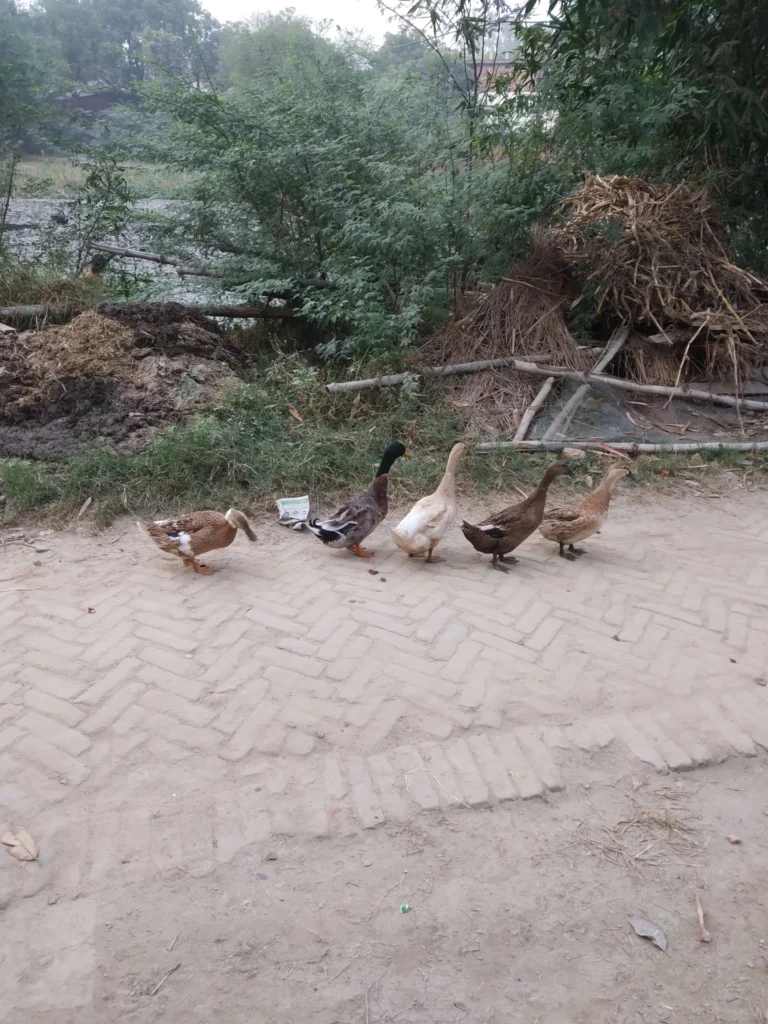
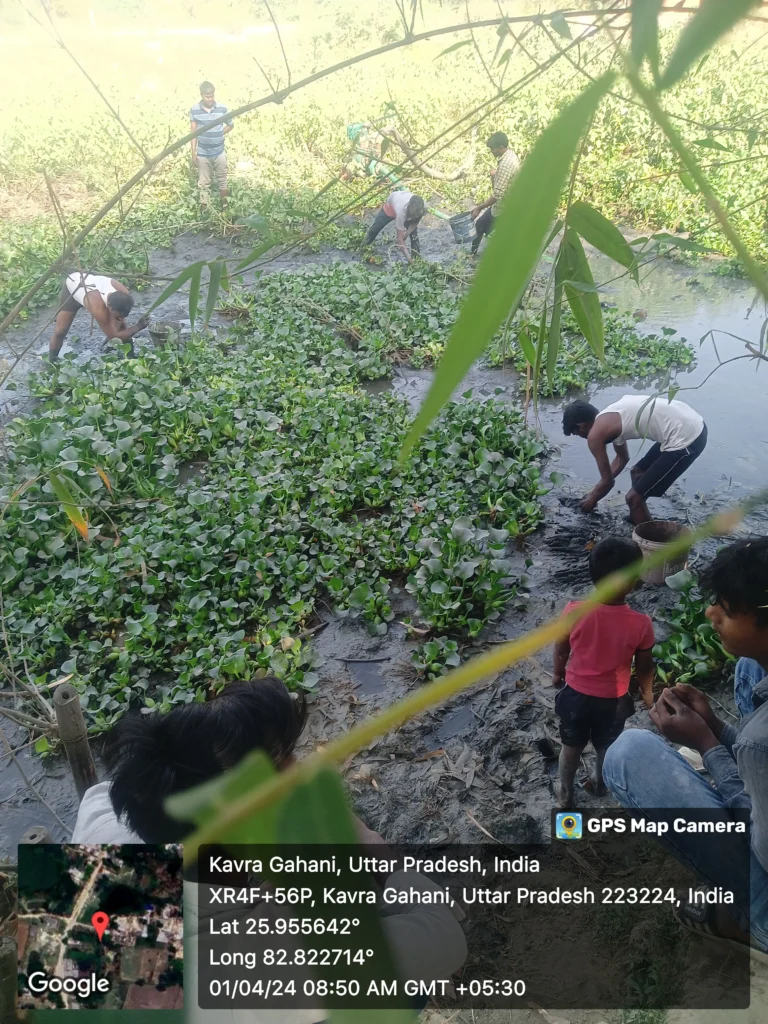
It was like watching a natural balance unfold in slow motion. Everything had a role, nothing was wasted. This wasn’t just farming—it was harmony.
Chai Breaks and Nitrogen Talks
Every evening, we’d gather over chai, muddy and tired, chatting about what we’d observed that day. The difference between yellowing leaves and healthy green ones made sense when we matched it to nitrogen levels. Even the feel of soil—dry and crumbly vs. moist and compact—began to tell its own story.
These hands-on experiences at KVK made one thing crystal clear:
👉 Real learning doesn’t stay in the notebook. It grows in the field, under the sun, with each trial and error.
Every day brought a new challenge and a new lesson—and slowly, I stopped just studying agriculture. I started living it.
Realization: Helping Farmers Beyond My Own Farm 🚜
After college, I came back home, full of confidence and ready to apply everything I’d learned. But farming on our own land? That’s where the real tests began.
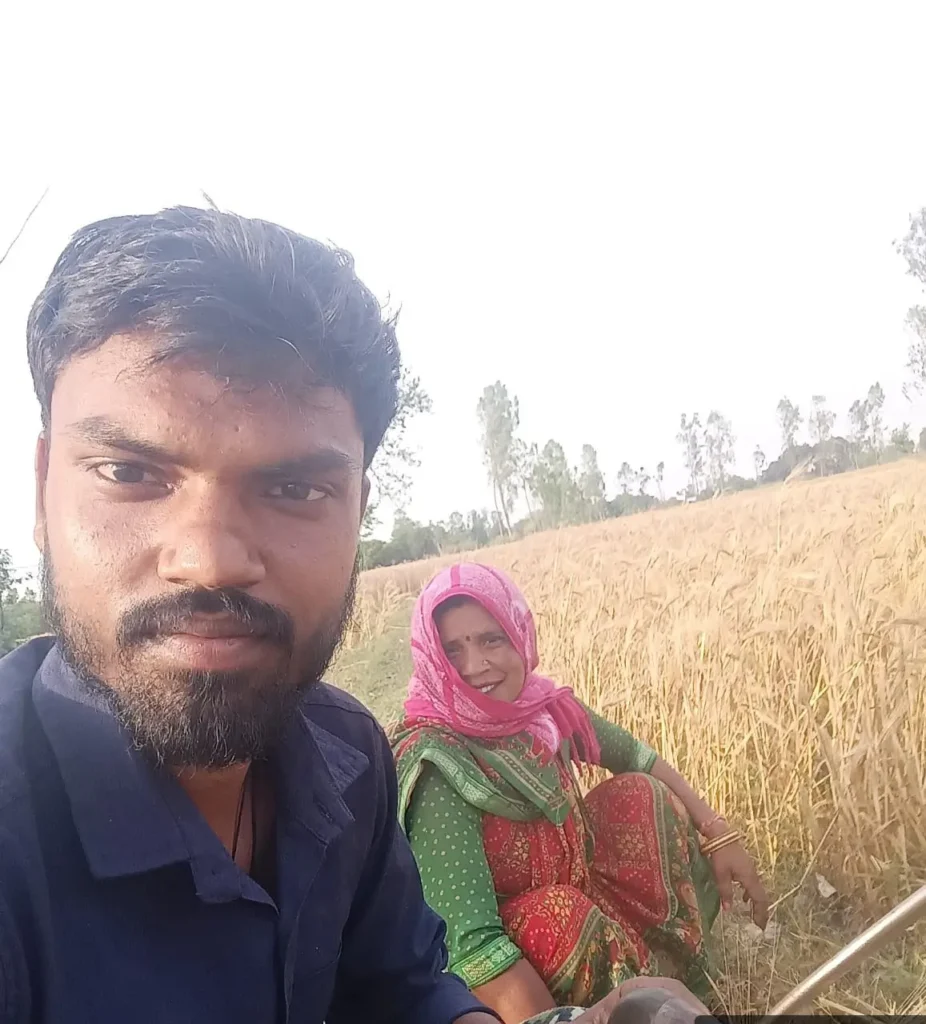
I remember one rice season in particular. We had planned everything—nursery prep, transplanting, fertilization—but when it was time for irrigation, our pump failed. Not once, but at the worst possible time. We lost crucial days, and our paddy yield dropped. That’s when I truly understood—planning is useless if the water doesn’t flow on time. Be-matlab ho jata hai sab kuch.
The next season, I delayed sowing wheat by just a couple of weeks—mainly due to seed unavailability. But the result? A shorter crop, lower yield, and extra weeding trouble. That tiny delay taught me how even a small shift in timing can ripple across the entire harvest.
We also experimented with multi-cropping:
- Mustard and pulses helped fix soil nutrients but needed careful rotation and different pest management.
- Potato and onion were high-profit, but exhausting during harvest and tough to store.
- Garlic and seasonal veggies brought in income, but drying and post-harvest storage. A whole new headache. We ended up setting up makeshift bamboo platforms just to keep garlic bulbs from rotting or getting pest infested.
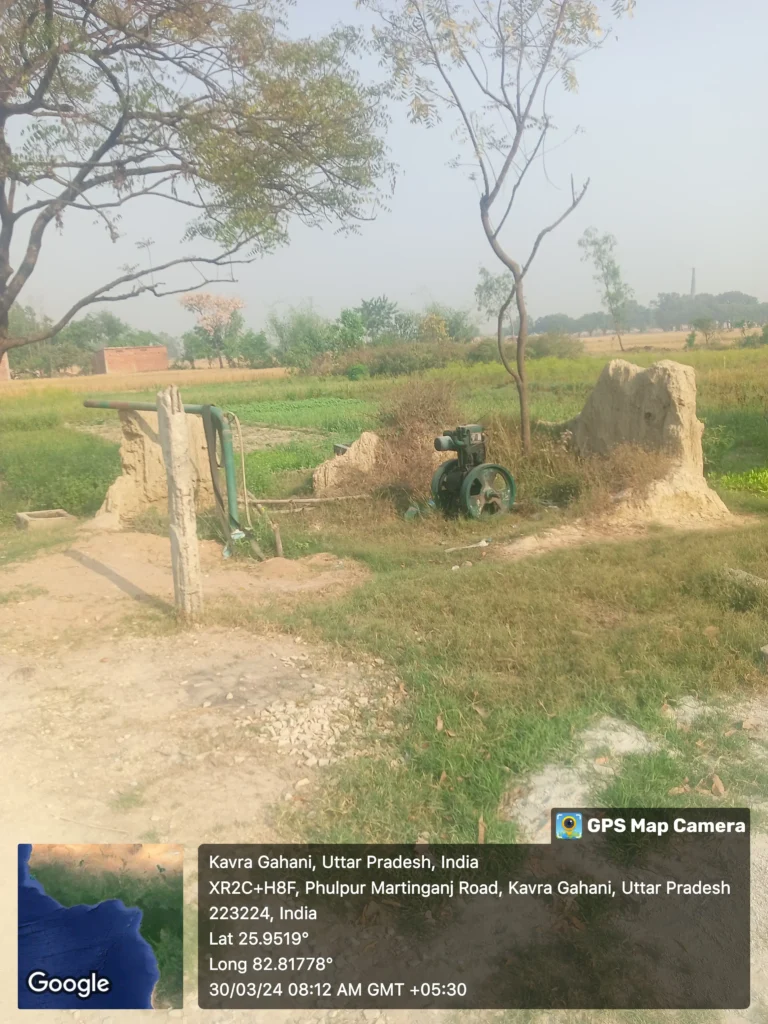
Each crop taught me something different. But together, they taught me one universal truth:
👉 Problems are different, but the struggle is the same – across every farm, every village.
That’s when it clicked.
Not every farmer gets the chance to do a RAWE program, or talk to ICAR scientists, or visit IIVR’s research labs. But the need for practical knowledge? That’s everywhere.
And I thought—
“If I’ve been lucky enough to learn all this, shouldn’t I share it with others who never got that chance?”
That was my turning point. Farming wasn’t just about my land anymore. It was about helping others grow, too.
Building Agriverses: From Farmer to Educator 🌱
Back in those college days, and even later while farming at home, I often turned to Google and YouTube for help. Whether it was about seed treatments or compost ratios—I’d type in my question with hope… and end up more confused. Most sites were either loaded with technical words or gave half-baked answers.
“Yaar, koi seedha answer mile toh jaan bachaaye!” I used to think.
No simple step-by-step guides. No visuals. No desi touch.
If I, a student of agriculture, found it tough to get clear info—how were everyday farmers managing?
That frustration planted a different kind of seed in my mind.
What if there was a space—online, simple, relatable—where any farmer or student could learn without the jargon?
Something that explained agri-tech, tools, organic practices, in a way that felt like learning from a trusted friend.
That’s how Agriverses was born.
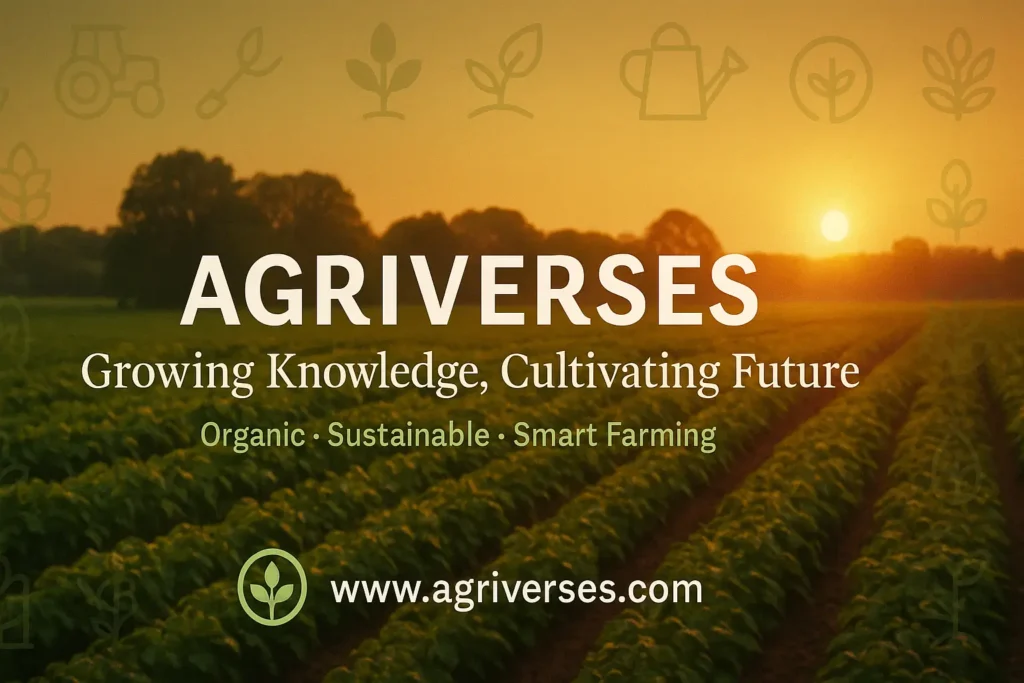
Agriculture + Universe = Agriverses, a digital farm space where knowledge grows like a well-watered crop.
Not just another website, but a mission: to simplify, desify, and spread real, practical agri-wisdom.
Here’s what we stand for:
Practical Guidance: Every article, every video, comes from the field. Whether it’s how to use a seed drill or how to spot nitrogen deficiency in leaves—it’s explained with real photos, stories, and steps anyone can follow.
Accessible Learning: We use a mix of English, Hinglish, and the occasional regional line—because language should never be a barrier to knowledge. Wherever possible, we add voice explanations, images, and clear examples.
Empowerment through Tech: Agriverses is not just about compost and soil health. We talk about drones, mobile apps, weather tech, agri-startups—because modern farming is smart farming, and our kisāns deserve the best.
I remember once googling “natural pesticide for okra” and getting stuck between PDFs and foreign videos. Today, if someone asks that same question on Agriverses, they’ll find a post in simple words, with ingredients they already have, and a video that shows exactly what to do.
And when farmers or students write back—saying one small tip helped them save a crop or earn more—that’s when I feel,
“Yes, this is it. This is the purpose.”
The digital field is blooming. And this time, we’re sowing knowledge.
Conclusion: The Mission Continues 🌾
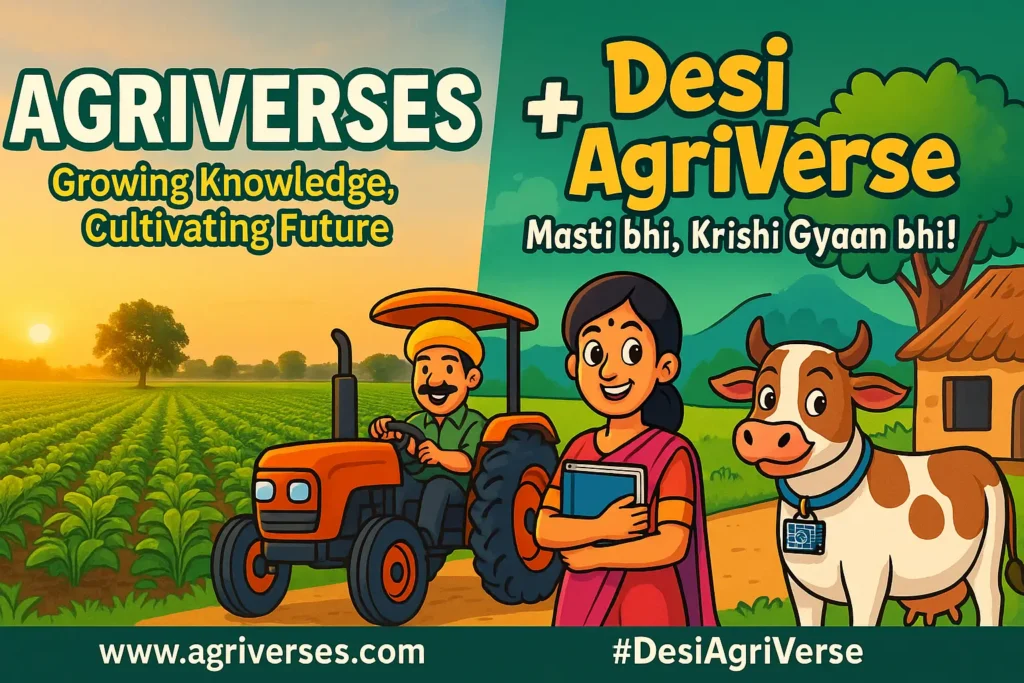
The journey hasn’t always been easy, but it’s been incredible. From working in the fields as a child with the earth on my hands, to now writing code and creating content for rural India, I still feel the same connection to the land and the people who work it. Every morning in the fields was a lesson, and every night spent building Agriverses on my laptop is another lesson in patience and purpose.
A lot has been achieved, but there’s still so much more to do. I am deeply grateful to every farmer, student, and reader who has joined us on this journey. Your curiosity and feedback keep Agriverses alive and growing.
Remember, this isn’t just my story – it’s all of ours. Together, we’re writing the future of Indian agriculture, from the fields to the digital world.
🔥 Share Agriverses’ story with everyone who dreams of connecting farming and the digital world! Comment, support, and spread the word!
This keeps the message inspiring and engaging while making it easy to read and understand. Let me know if you’d like any changes!
Jaise main apni mitti ko bina chemical ke nurture karta hoon, waise hi apne readers ko bhi organic content deta hoon – asli, seedha khet se!
👉 अगर आप भी soch rahe ho kheti ko natural banane ka, toh yeh padhiye: Organic Farming ka Real Guide Yahaan Hai!
FAQ: Agriverses Journey
What inspired the Agriverses platform?
Agriverses was inspired by the gap between practical farming knowledge and online content. While studying agriculture and working on the family farm, I struggled to find clear, step-by-step answers in Hindi or Hinglish. That frustration turned into a mission—to create a platform that simplifies modern farming for students and farmers.
How does RAWE training help agriculture students?
RAWE (Rural Agricultural Work Experience) gives agriculture students real exposure to farming beyond theory. Through hands-on tasks like soil sampling, organic farming, and integrated systems, students gain practical skills that can’t be learned from books. It bridges the gap between classroom learning and field-level challenges.
What is a duck-fish-fruit integrated farming system?
It’s a sustainable farming method where ducks, fish, and fruit trees are integrated. Ducks eat pests and fertilize the pond, fish thrive in the nutrient-rich water, and trees benefit from the pond’s ecosystem. This system reduces chemical use and increases productivity in a natural, balanced way.
Why is timing critical in crop cultivation?
Crop timing affects everything from yield to pest management. Delayed sowing—even by a week—can lower harvest quality or miss ideal weather windows. In my own farm experience, missing irrigation schedules or delaying wheat sowing directly impacted productivity and income. Timing is key for profitable farming.
What makes Agriverses different from other agriculture blogs?
Agriverses focuses on practical, field-tested farming knowledge in simple language. We share tutorials, videos, and guides that are easy to follow for farmers and agri-students. With content in English and Hinglish, it feels like learning from a friend—not a textbook. Real stories + real solutions = Agriverses.
How can young farmers benefit from digital farming platforms?
Digital platforms like Agriverses provide easy access to farming tips, tools, and training. From using mobile apps to understanding organic inputs, young farmers can learn modern techniques that boost productivity. They don’t need to rely only on local advice—they can now learn anytime, anywhere.
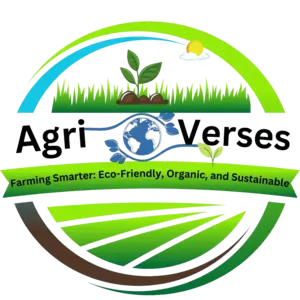
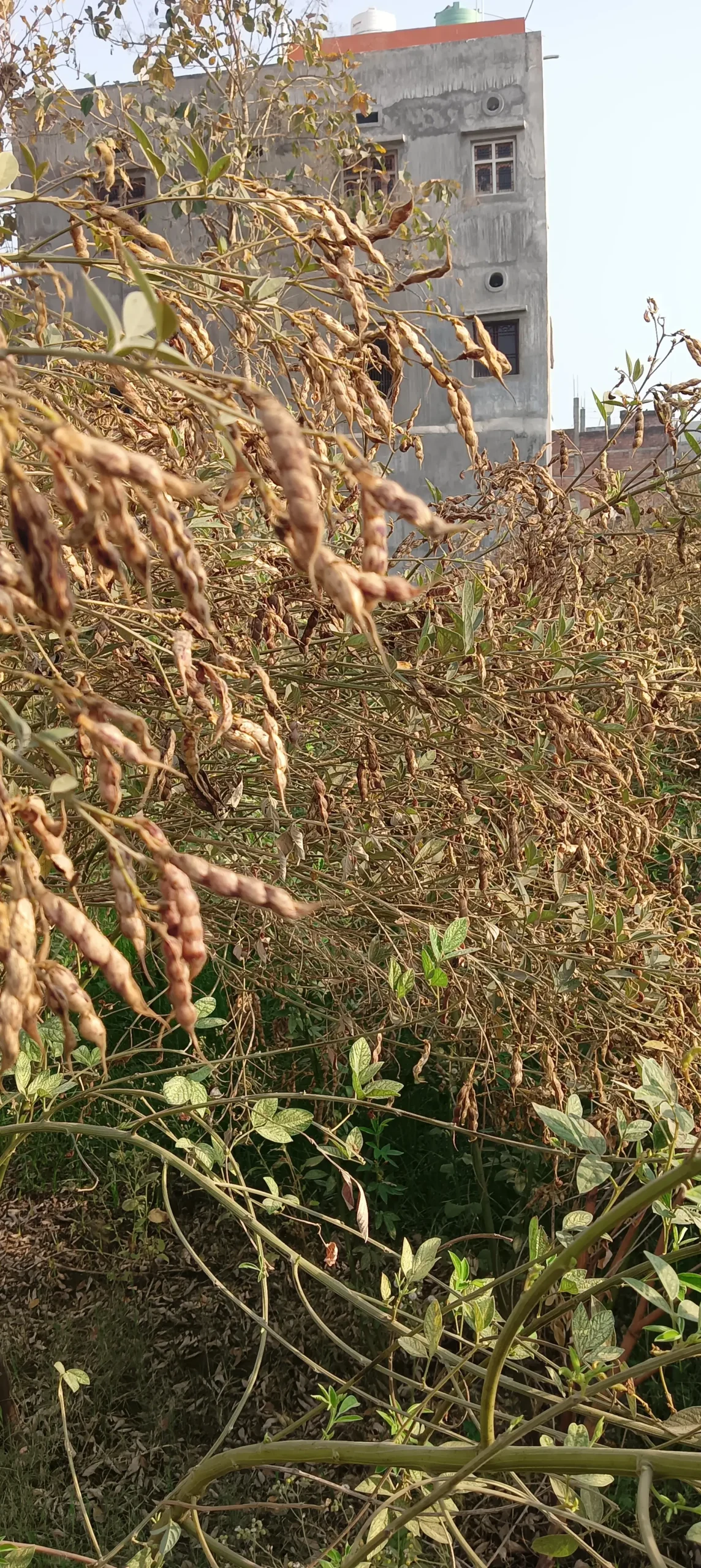
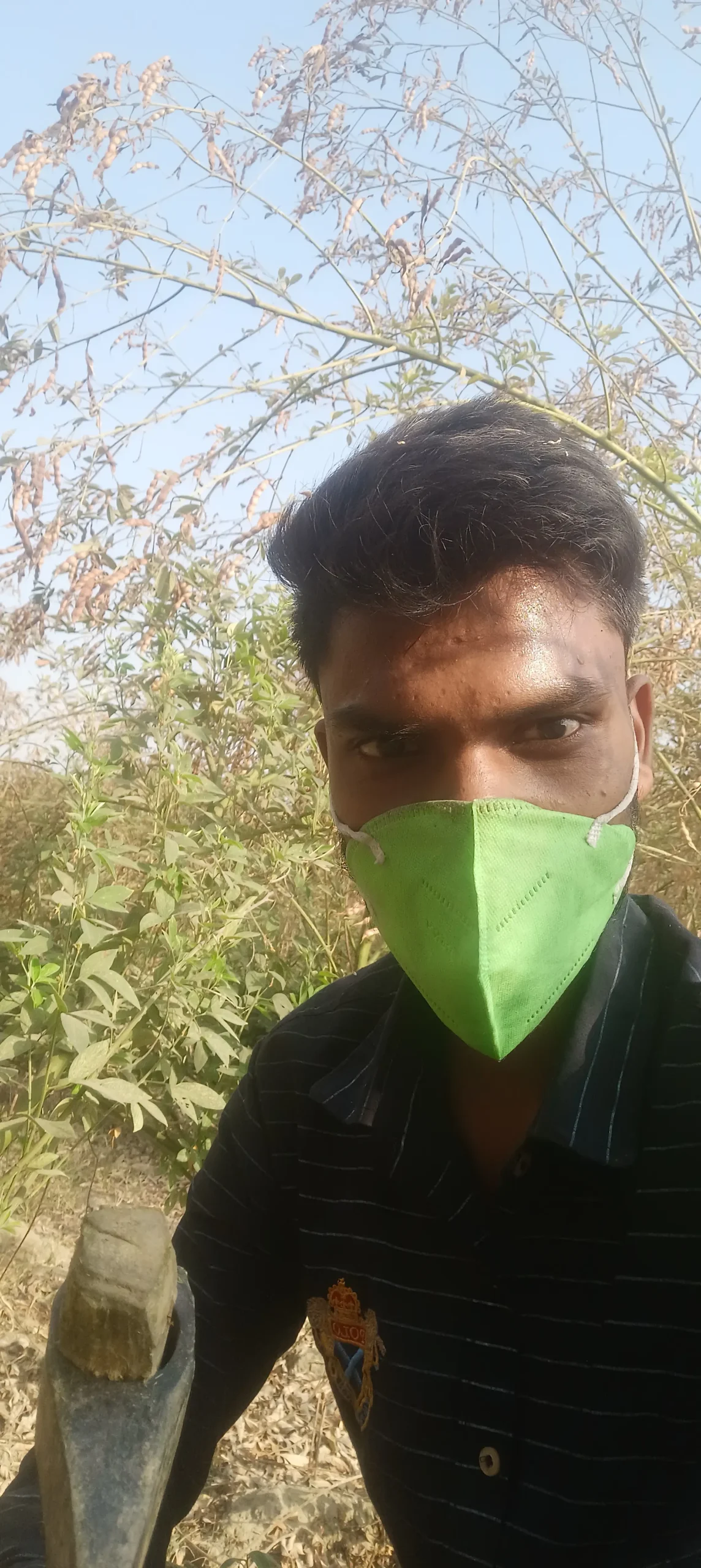
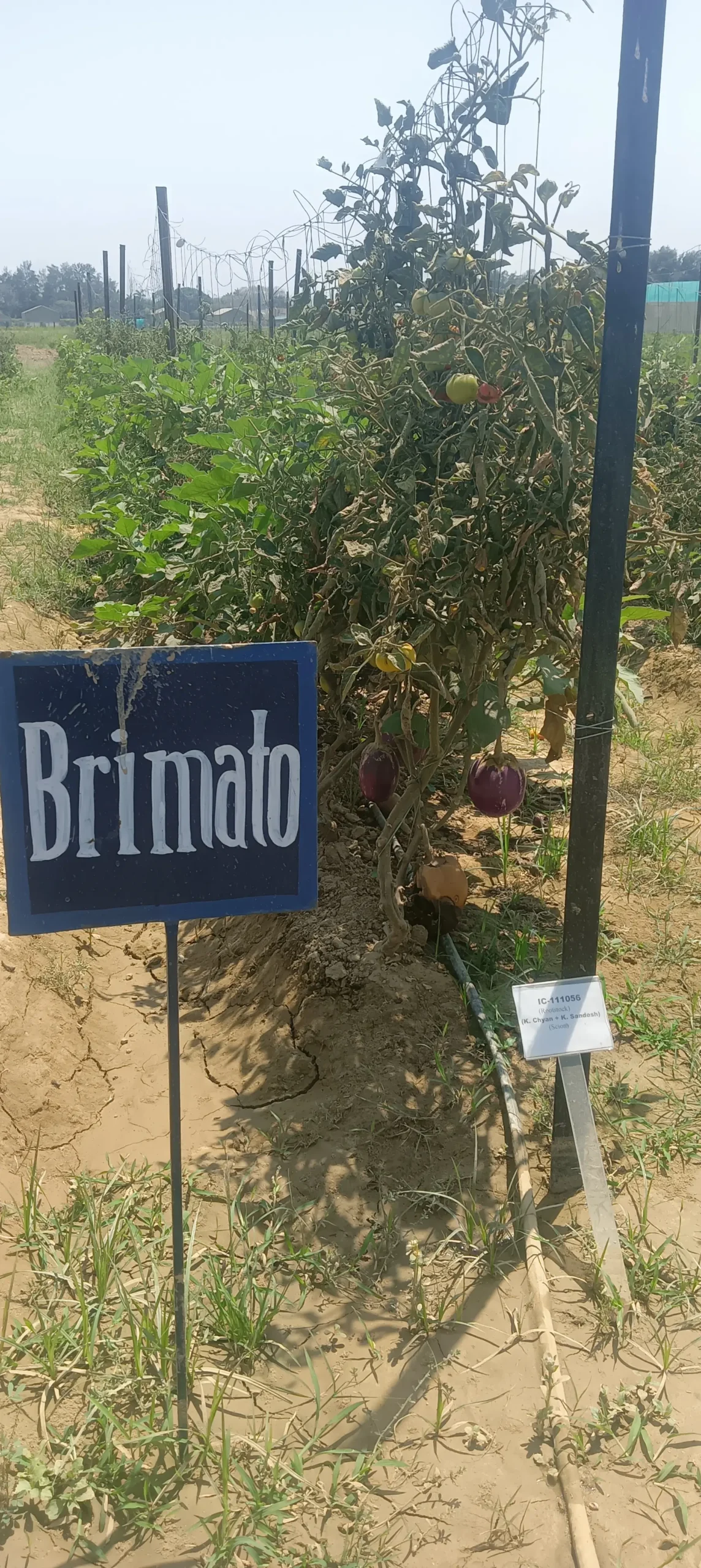
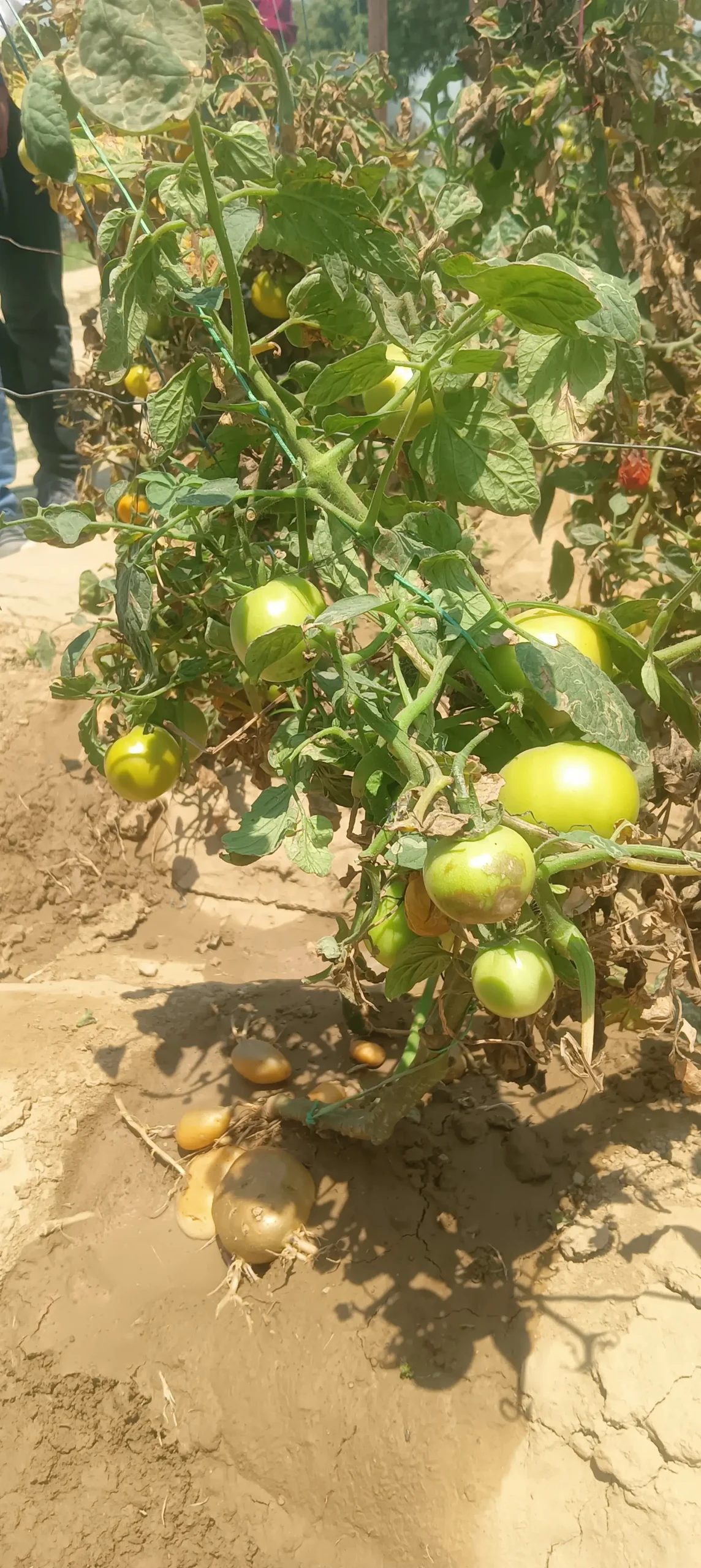

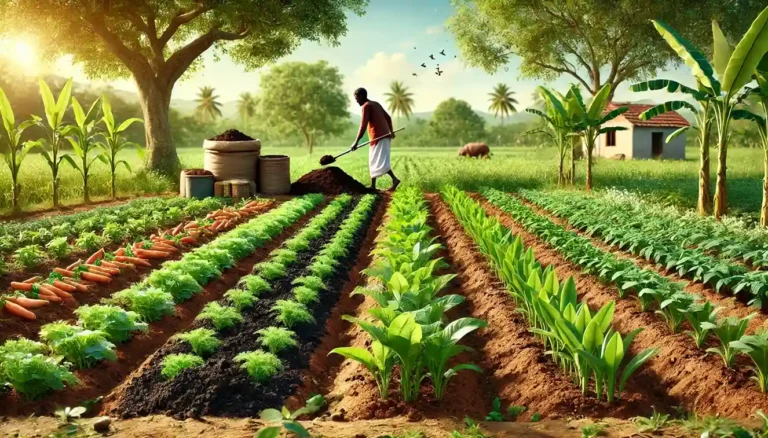
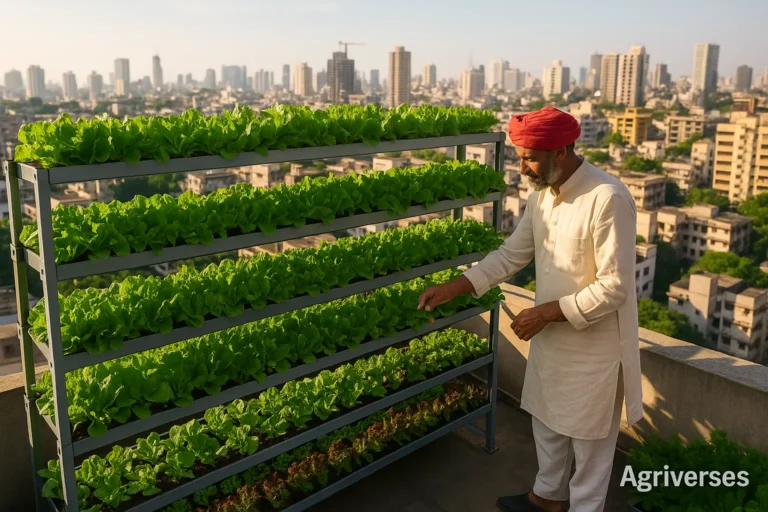
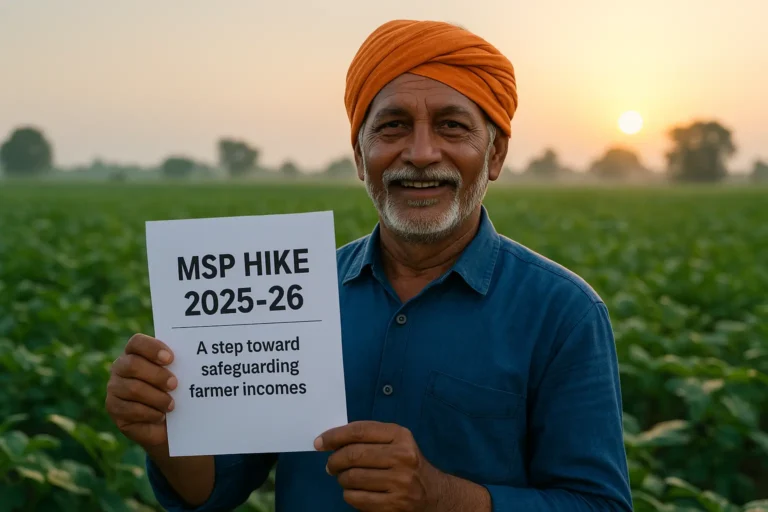
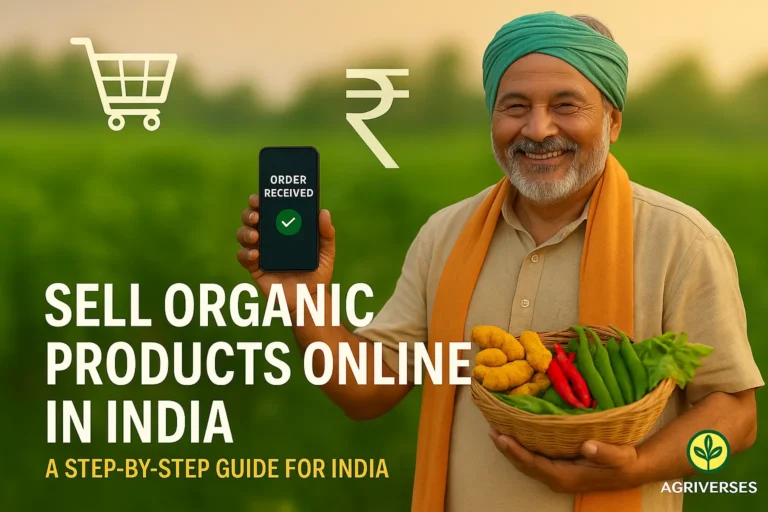


3 Comments